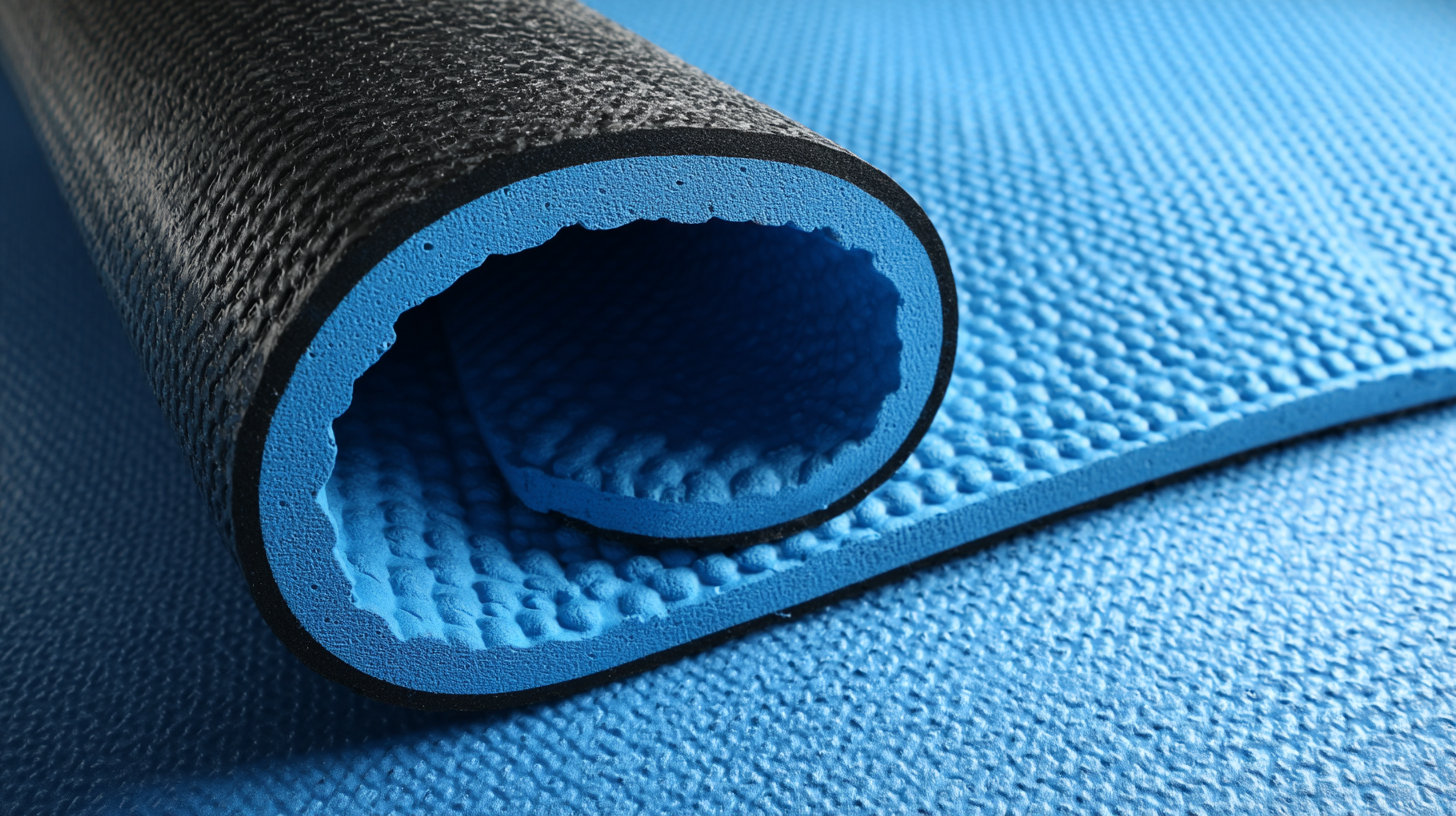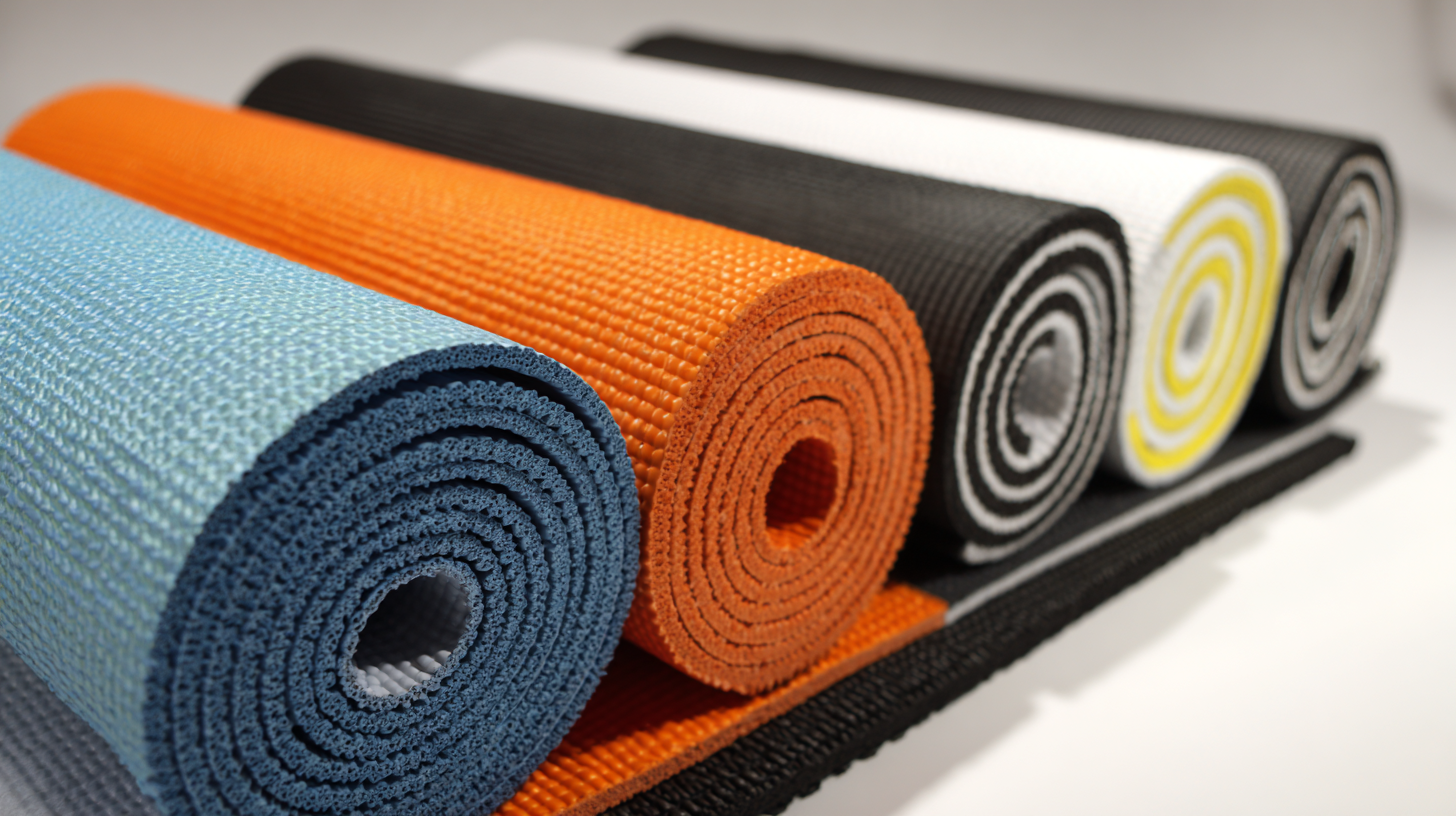In recent years, the popularity of Eva Foam Mats has surged, becoming a staple in various industries ranging from fitness to child safety. According to a report by MarketsandMarkets, the global foam mats market is projected to reach USD 5.3 billion by 2025, driven by increasing awareness of health and wellness as well as rising demand for safe, cushioned environments. Eva Foam Mats are recognized for their durability, lightweight nature, and versatility, making them ideal for gyms, playrooms, and workshops alike. However, with so many manufacturers claiming to offer the best products, it becomes crucial for consumers to understand the key specifications and applications of these mats. This guide will not only help you choose a quality manufacturer but will also provide insights into the proper selection and application techniques to maximize the benefits of Eva Foam Mats for your specific needs.

Eva foam mats are composed of ethylene-vinyl acetate, a lightweight and flexible material known for its excellent shock absorption and buoyancy. According to industry reports, the global EVA market is projected to reach approximately $7 billion by 2025, driven by the increasing demand for versatile flooring solutions in sports, fitness, and children's play areas. The composition of EVA provides significant insulation and sound-dampening properties, making it an ideal choice for various applications, from gyms to homes.
When choosing EVA foam mats, consider their density and thickness. Thicker mats typically offer better cushioning, while denser options provide more durability. A study published in the Journal of Sports Science indicates that using proper cushioning can significantly reduce the risk of injuries during physical activities. This highlights the importance of investing in high-quality EVA foam mats, especially in environments where safety is a priority.
**Tips:**
1. Always check for certifications that ensure the mats are free from harmful chemicals, particularly if they are intended for children's use.
2. For added comfort, look for mats with interlocking features which allow for easy assembly and customization of your space.
When selecting EVA foam mats, understanding key specifications is vital to ensuring you make an informed choice. The thickness of the mat plays a critical role; for example, mats ranging from 10 mm to 25 mm are ideal for activities that require a softer surface, such as yoga or children's play areas. According to a 2021 report by Grand View Research, the EVA foam market is projected to reach USD 2.5 billion by 2028, emphasizing the growing popularity of these mats in both commercial and residential settings.
Another essential specification is the density of the foam, which impacts durability and comfort. Higher density mats, typically above 20 kg/m³, tend to be more resilient and can withstand heavy foot traffic, making them suitable for gyms and fitness studios. A study by Technavio suggests that the increasing demand for fitness applications will drive a 7% annual growth rate in the EVA foam sector through 2025. It's crucial to choose a mat that strikes the right balance between comfort and durability for your specific needs.
Tips: Always check for non-toxic certifications, especially if the mats will be used in areas for children. Additionally, consider the mat's surface texture, as a non-slip surface enhances safety, especially in high-moisture environments, such as in gyms or kitchens.
Eva foam mats are gaining immense popularity across various industries due to their versatile applications and unique properties. In the fitness industry, these mats are widely used in gyms and training facilities. Their shock-absorbing qualities make them ideal for high-impact workouts, providing a safe and comfortable surface for exercises such as weightlifting, yoga, and martial arts. Additionally, the non-slip texture of eva foam ensures that users maintain stability during their routines, reducing the risk of injuries.
In the realm of childcare, eva foam mats are essential in creating safe play environments for young children. These mats come in vibrant colors and fun designs, which not only attract children but also serve a functional purpose by cushioning falls and minimizing injuries. Moreover, they are easy to clean and maintain, making them a practical choice for parents and caregivers. Beyond fitness and childcare, eva foam mats find applications in various sectors including automotive, flooring, and even event planning, where they are used to provide comfort and safety in different settings.
The future of EVA foam mat technology and design is poised for significant advancements, driven by ongoing research and innovation in materials science. A recent report by Grand View Research projects that the global EVA foam market will reach USD 11.68 billion by 2025, expanding at a compound annual growth rate (CAGR) of 5.6%. This growth indicates not only an increasing demand for EVA foam products but also a trend towards enhanced performance characteristics, including improved durability, flexibility, and eco-friendliness. Manufacturers are focusing on developing mats that incorporate recycled materials and non-toxic additives, aligning with the growing consumer preference for sustainable products.

Moreover, advancements in manufacturing technologies such as 3D printing and automated cutting are enabling designers to create more intricate patterns and textures in EVA foam mats. According to a report from Allied Market Research, the specialty flooring market is expected to witness a CAGR of 4.9% from 2022 to 2031, highlighting a rising interest in customized and aesthetically pleasing flooring solutions. This trend is particularly salient in the fitness and wellness industries, where EVA foam mats are increasingly being recognized not just for their functionality, but also for their aesthetic contributions to environments like yoga studios and gyms. Thus, as technology evolves, the designs and applications of EVA foam mats will continue to diversify, capturing a broader audience and meeting the specific needs of various sectors.
When it comes to maintaining EVA foam mats, appropriate care is crucial to ensure their longevity and performance. According to a report from the International Association of Sports Flooring, proper maintenance can extend the lifespan of EVA mats by up to 30%. Regular cleaning with mild detergent and water can help prevent dirt and grime build-up, which is vital as it can degrade the material over time. Avoid using harsh chemicals or abrasives, as these can compromise the integrity of the foam.

In addition to cleaning, storing EVA mats correctly is essential to their upkeep. Research from the Rubber Manufacturers Association indicates that keeping mats in a dry, climate-controlled environment can reduce the risk of mold and mildew growth significantly. Furthermore, rolling the mats neatly instead of folding them prevents creases and damage, maintaining their structure and usability. By following these simple maintenance practices, users can ensure their EVA foam mats remain in optimal condition for years to come.
